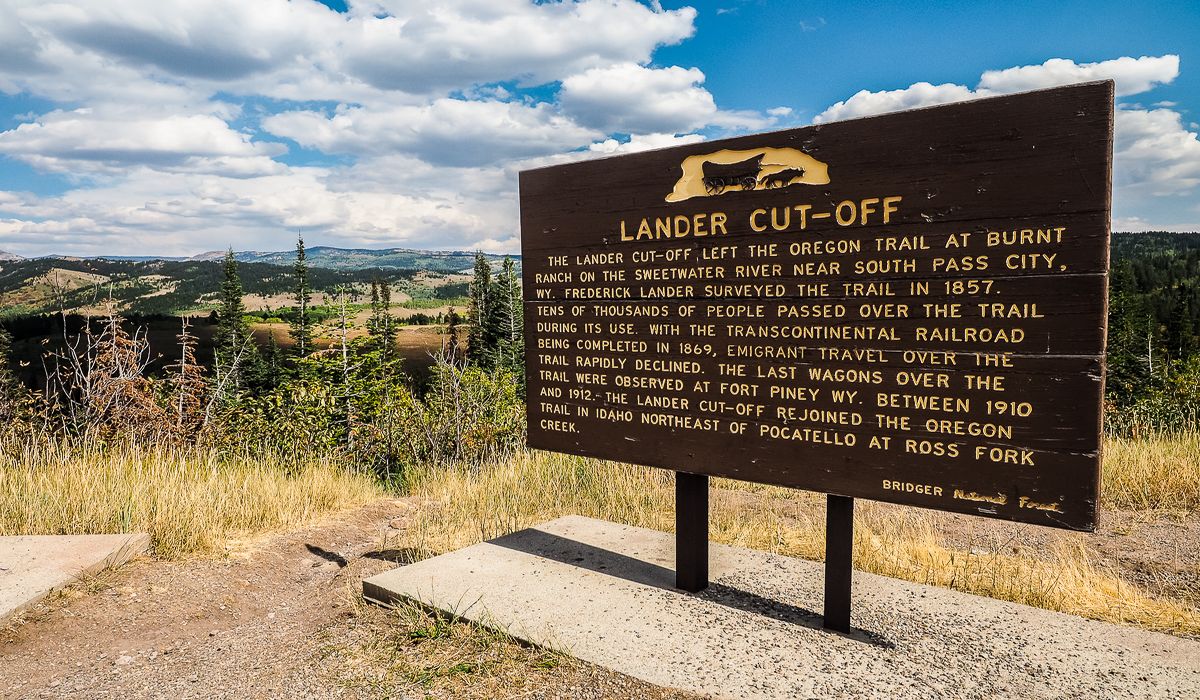Hidden Pioneer Paths Of Wyoming’s Oregon Trail

Have you ever wondered what it was like to travel the Oregon Trail? Wyoming holds many secrets of this historic route. Imagine walking in the footsteps of pioneers who braved harsh weather, rugged terrain, and countless challenges. This trail, stretching over 2,000 miles, was a lifeline for settlers moving westward in the 19th century. Today, you can still see remnants of their journey, from wagon ruts to historic landmarks. Whether you're a history buff or just love the great outdoors, exploring Wyoming's section of the Oregon Trail offers a unique glimpse into America's past. Ready to step back in time? Let's go!
Hidden Pioneer Paths of Wyoming's Oregon Trail
Wyoming's Oregon Trail holds secrets and stories of the pioneers who ventured westward. While many know the main route, hidden paths offer a glimpse into lesser-known adventures. These paths reveal the rugged beauty and challenges faced by early travelers.
1. Independence Rock
Independence Rock stands as a granite sentinel in the Wyoming landscape. Pioneers carved their names into its surface, leaving a lasting legacy. This landmark served as a crucial checkpoint, marking the halfway point to Oregon.
- Historical Significance: Known as the "Register of the Desert," it bears the names of hundreds of pioneers.
- Scenic Views: Offers panoramic views of the surrounding plains.
- Accessibility: Easily reachable from Highway 220.
2. South Pass
South Pass, a broad valley, provided a natural crossing point over the Continental Divide. This pass was vital for wagons, making the journey less treacherous.
- Geographical Importance: Eased the crossing of the Rocky Mountains.
- Historical Sites: Nearby landmarks include the Parting of the Ways and Pacific Springs.
- Wildlife: Home to diverse wildlife, including pronghorn and elk.
3. Fort Laramie
Fort Laramie served as a major resupply point for pioneers. This military post offered protection and provisions, becoming a bustling hub of activity.
- Historical Buildings: Preserved structures like the Old Bedlam and the Sutler’s Store.
- Museum Exhibits: Displays artifacts from the pioneer era.
- Guided Tours: Available to explore the fort's rich history.
4. Register Cliff
Register Cliff, another natural register, features inscriptions from pioneers who passed through. This sandstone cliff tells stories of hope and hardship.
- Carvings: Names and dates etched into the rock by travelers.
- Picnic Area: A peaceful spot for rest and reflection.
- Nearby Attractions: Close to the town of Guernsey and the Oregon Trail Ruts.
5. Devil's Gate
Devil's Gate, a narrow cleft in the Rattlesnake Range, posed a significant challenge for wagons. Its dramatic landscape captivated and intimidated travelers.
- Natural Formation: A striking geological feature.
- Hiking Trails: Trails lead to the base of the gate.
- Historical Context: Mentioned in many pioneer diaries.
6. Sweetwater River
The Sweetwater River provided a vital water source for pioneers. Its gentle flow and lush banks offered a welcome respite.
- Camping Spots: Ideal locations for camping and fishing.
- Historical Markers: Signs along the river recount pioneer stories.
- Scenic Beauty: Picturesque views of the river and surrounding terrain.
7. Fort Bridger
Fort Bridger, established by Jim Bridger, became a key trading post. Pioneers could rest, resupply, and trade goods here.
- Reconstructed Buildings: Includes the trading post and barracks.
- Living History Events: Reenactments bring the past to life.
- Visitor Center: Provides information and exhibits on the fort's history.
8. Split Rock
Split Rock served as a navigational landmark for pioneers. Its unique shape made it easily recognizable from a distance.
- Trail Marker: Guided travelers along the correct path.
- Photography Spot: Offers stunning photo opportunities.
- Historical Significance: Mentioned in numerous pioneer journals.
9. Martin's Cove
Martin's Cove holds a poignant place in pioneer history. This site witnessed the tragic events of the Martin Handcart Company.
- Memorials: Monuments honor those who perished.
- Interpretive Center: Provides detailed accounts of the handcart companies.
- Walking Trails: Paths lead through the cove, offering a reflective experience.
10. Rock Creek Hollow
Rock Creek Hollow, a serene valley, provided shelter for weary travelers. Its tranquil setting belies the hardships faced by those who camped here.
- Historical Campsite: Used by the Willie Handcart Company.
- Interpretive Signs: Informative signs detail the site's history.
- Natural Beauty: Surrounded by rolling hills and meadows.
Discover Wyoming's Hidden Pioneer Paths
Wyoming's Oregon Trail offers a unique glimpse into America's past. The hidden pioneer paths reveal stories of courage, hardship, and adventure. Visiting these trails, you can walk where pioneers once tread, see landmarks like Independence Rock, and experience the vast landscapes that challenged early settlers.
Exploring these paths isn't just about history; it's about connecting with the spirit of exploration and resilience. Whether you're a history buff or an outdoor enthusiast, Wyoming's trails provide a rich, immersive experience.
Plan your trip, pack your gear, and set out on an adventure that brings history to life. The hidden paths of Wyoming's Oregon Trail await, offering a journey through time and a deeper understanding of the pioneer spirit.

